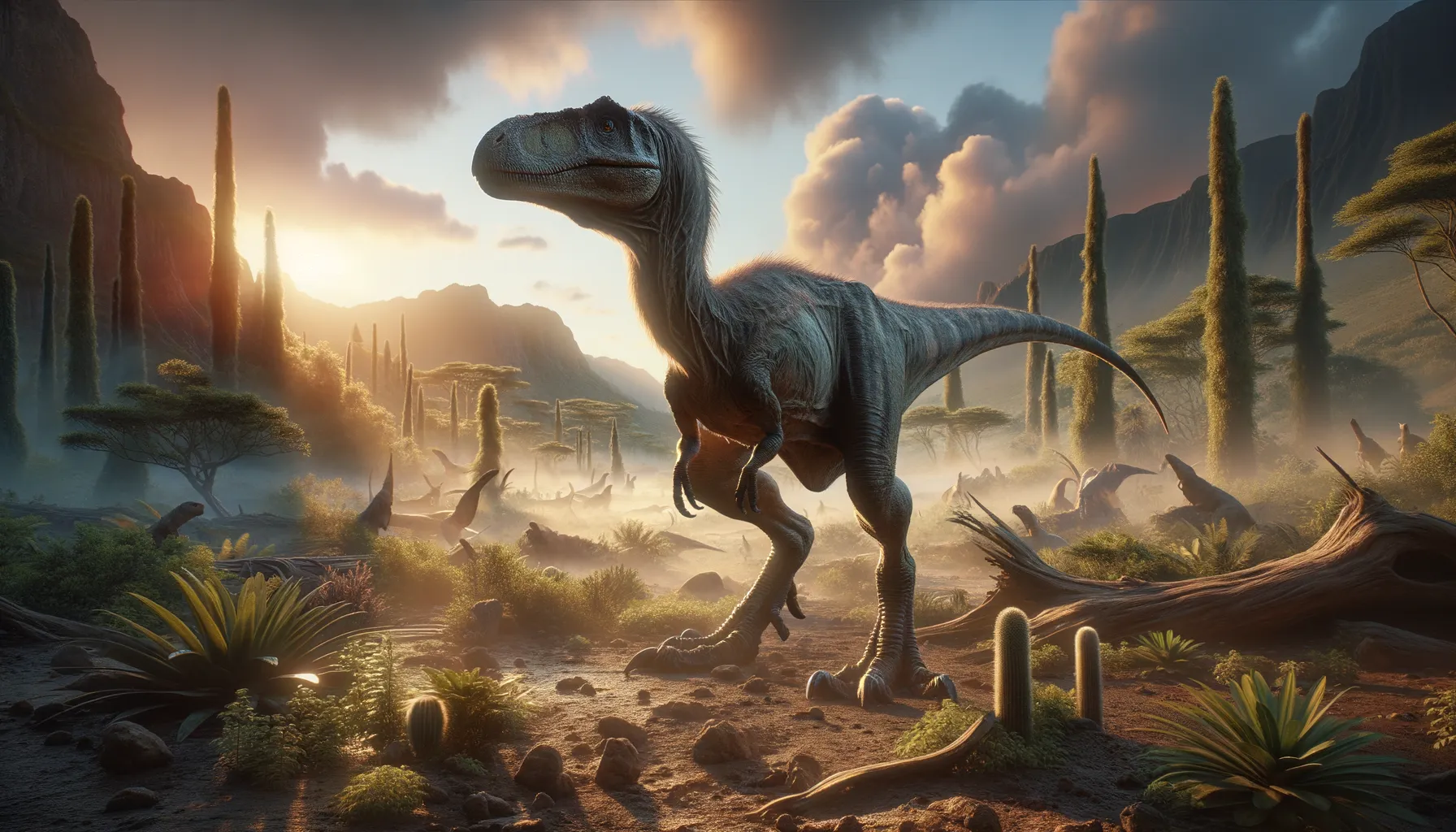
Saurornithoides
The nimble, sharp-minded dino hunter.
Period
Cretaceous
Length
Approximately 2 meters (6.5 feet) long.
Height
About 0.9 meters (3 feet) tall.
Weight
Approximately 23 kilograms (50 pounds).
Saurornithoides was a small, agile theropod dinosaur known for its bird-like characteristics and keen senses. It roamed the Earth during the Late Cretaceous period, around 75-70 million years ago. With a lightweight build and an exceptional balance, it was well-suited for a life of hunting small prey. Its highly developed brain suggests it was a smart and adaptable creature, making it a fascinating example of evolution towards more bird-like dinosaurs.
Diet
Saurornithoides was likely an omnivore, primarily feeding on small vertebrates and possibly plants. Its diet would have consisted of whatever was readily available in its environment, showcasing its adaptability.
Hunting
Saurornithoides used its agility and speed to catch small prey, relying on stealth and quick reflexes. It likely hunted alone, using its keen senses to detect and ambush its unsuspecting targets.
Environmental challenges
Saurornithoides faced environmental challenges such as fluctuating climates and competition for resources. It inhabited a region that experienced seasonal changes, requiring adaptability to varying food availability. Additionally, the presence of larger predators would have posed a constant threat, necessitating evasive strategies.
Speed
Moderately fast, agile runner.
Lifespan
Estimated to be several decades.
First discovery
Discovered in 1923 in Mongolia.
Fun Facts
- Saurornithoides was a small, bird-like dinosaur that lived about 80 million years ago during the Late Cretaceous period.
- This dinosaur's name means 'lizard bird form', reflecting its bird-like features and reptilian heritage.
- Saurornithoides is believed to have had a keen sense of sight and hearing, helping it be an effective nocturnal hunter.
- It was a part of the troodontid family, which are known for their relatively large brains compared to other dinosaurs, suggesting high intelligence.
- Fossils of Saurornithoides have been found in Mongolia, giving clues about its environment and way of living.
- It had long, slender legs and likely ran swiftly, assisting in catching prey or escaping predators.
- The discovery of Saurornithoides has helped scientists understand more about the diversity and adaptability of feathered dinosaurs.
Growth and Development
Saurornithoides would have gone through a rapid growth phase in its early years, a characteristic shared by many theropods. Juveniles likely had to fend for themselves relatively early, learning essential survival skills quickly. Over time, individuals adjusted to environmental pressures, with their keen senses and intelligence playing crucial roles in their development.
Habitat
Saurornithoides inhabited the semi-arid and open environments of late Cretaceous Mongolia. The landscape was a mixture of floodplains, rivers, and forested areas, offering diverse ecological niches. These habitats provided ample opportunities for finding food, but also required swift adaptability to survive.
Interaction with other species
Saurornithoides likely competed with other small theropods for similar prey and resources. It may have also encountered larger herbivorous dinosaurs, which it would have generally avoided due to their size. Symbiotic relationships with other creatures, such as scavengers, could have existed, as each filled a specific ecological niche.
Natural lifespan
Saurornithoides likely lived for several decades in the wild.
Reproduction
Saurornithoides likely reproduced by laying eggs in carefully constructed nests. These dinosaurs might have engaged in some form of parental care, albeit limited, to protect their eggs until hatching.
Social behaviour
While primarily solitary, Saurornithoides might have come together during breeding seasons. Its sharp intellect would have aided in social interactions, comparable to those seen in contemporary raptors.
Fossil locations
The primary fossil discovery of Saurornithoides was made in Mongolia’s Gobi Desert in 1923. Further excavations have yielded additional remains in the same region, helping to piece together its ecological context. These findings are crucial for understanding the Late Cretaceous ecosystems of Central Asia.
